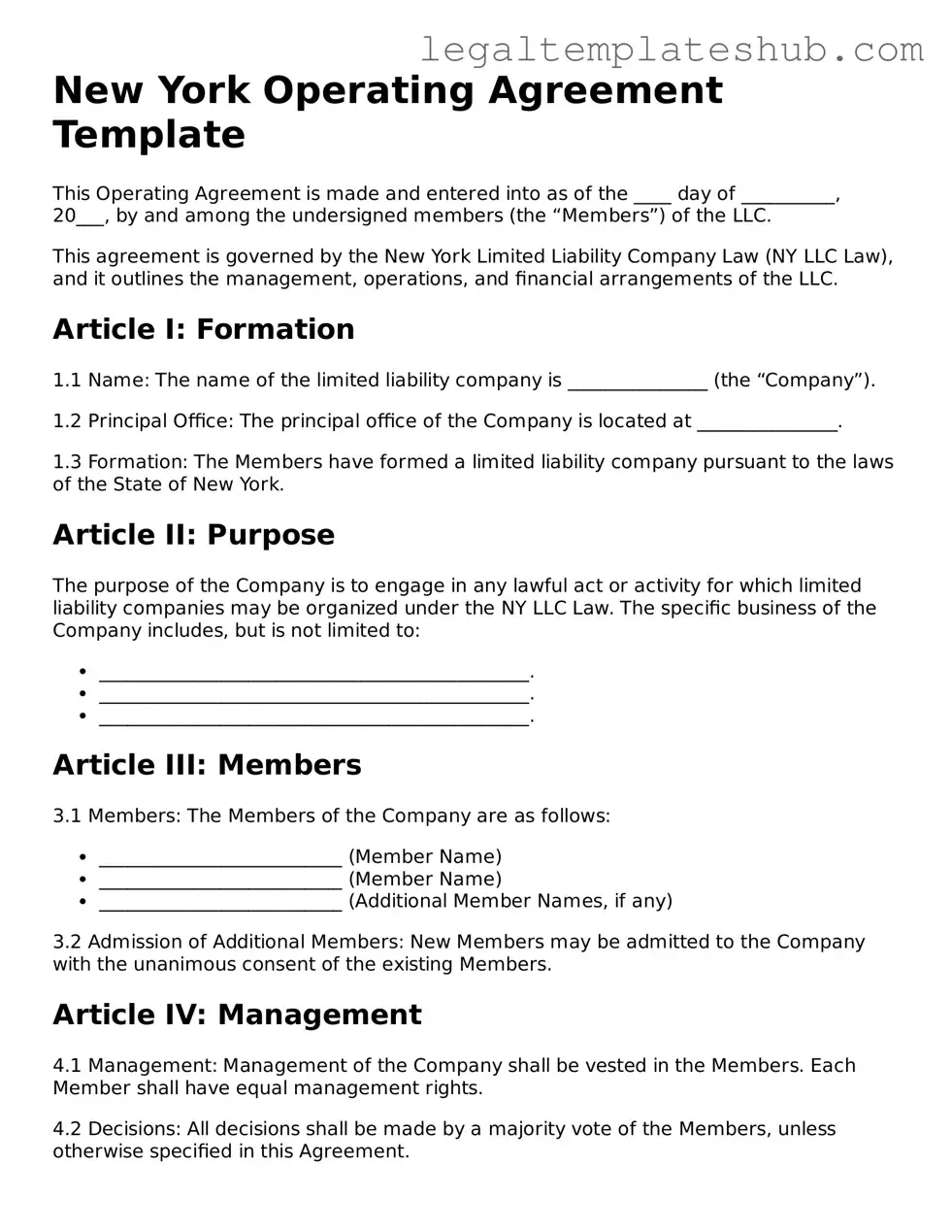Printable Operating Agreement Document for New York
The New York Operating Agreement is a crucial document that outlines the management structure and operational procedures of a limited liability company (LLC) in New York. This agreement serves as a roadmap for the members, detailing their rights, responsibilities, and the distribution of profits. Understanding this form is essential for ensuring a smooth operation of your LLC, so take the first step by filling out the form below.
Access Editor
